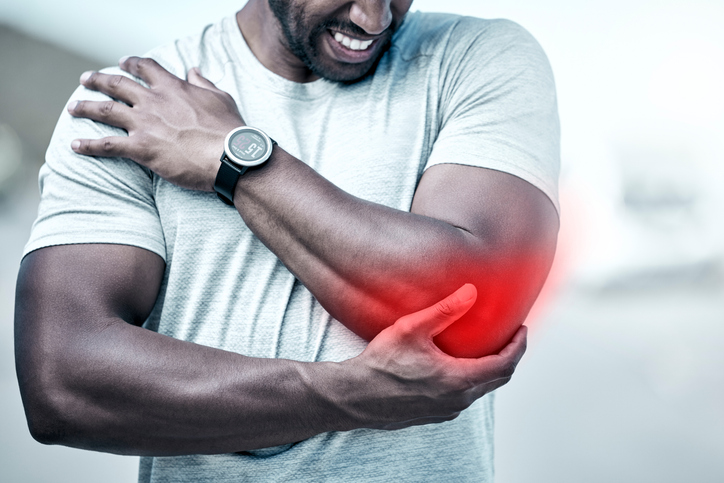The elbow is a complex joint that connects the upper arm bone, humerus, to the forearm bones, ulna and radius. It is crucial for various activities, ranging from lifting and throwing to simple daily tasks like typing or cooking. Given its frequent use, the elbow is susceptible to a range of injuries.
 Most elbow conditions are the result of trauma such as injury from a fall or automobile accident, or overuse from playing sports like golf and tennis. Occupations requiring repetitive motion of the arm, such as painting, cooking, cleaning, and product assembly, also pose risks for elbow injury or strain. Butchers, cooks, carpenters, clerical workers, painters, and plumbers are all examples of workers who may develop lateral epicondylitis.
Most elbow conditions are the result of trauma such as injury from a fall or automobile accident, or overuse from playing sports like golf and tennis. Occupations requiring repetitive motion of the arm, such as painting, cooking, cleaning, and product assembly, also pose risks for elbow injury or strain. Butchers, cooks, carpenters, clerical workers, painters, and plumbers are all examples of workers who may develop lateral epicondylitis.
Whether playing sports or performing repetitive tasks, using the correct technique can reduce the strain on the elbow. Strengthening the muscles around the elbow can provide better support and reduce the risk of injury. Regular stretching can improve flexibility and reduce the risk of tendon and muscle injuries. For those who spend long hours at a desk, ensuring an ergonomic setup can prevent strain on the elbow. Using braces or supports during high-risk activities can provide additional protection.
Incorporating preventive measures into your daily routine can significantly reduce the risk of injury, allowing you to maintain an active and pain-free lifestyle. It is important to consult a healthcare professional if you experience severe pain, swelling, noticeable deformity, or if you are unable to move your elbow. Early diagnosis and treatment can prevent further damage and promote a quicker recovery. An SOS elbow specialist can help to diagnose and care for elbow pain. SOS medical professionals provide each patient individualized care because there are many different causes of elbow pain.
Common Types of Elbow Injuries Treated by SOS Hand & Wrist Specialists
Tennis Elbow (Lateral Epicondylitis)
- Cause: Overuse of the forearm muscles, often due to repetitive motions such as those in tennis or other racquet sports.
- Symptoms: Pain and tenderness on the outside of the elbow, which can extend into the forearm and wrist.
- Treatment: Rest, ice, anti-inflammatory medications, physical therapy, and sometimes corticosteroid injections.
Golfer's Elbow (Medial Epicondylitis)
- Cause: Similar to tennis elbow but affects the inner part of the elbow. It is caused by repetitive wrist and forearm motions.
- Symptoms: Pain and tenderness on the inside of the elbow, which may spread to the forearm.
- Treatment: Similar to tennis elbow, including rest, ice, anti-inflammatory medications, and physical therapy.
Elbow Fractures
- Cause: Direct trauma or fall onto an outstretched hand.
- Symptoms: Severe pain, swelling, bruising, and inability to move the elbow.
- Treatment: Immobilization with a cast or splint, pain management, and, in severe cases, surgery to realign and stabilize the bones.
Elbow Dislocation
- Cause: Usually results from a fall onto an outstretched hand, causing the bones to be forced out of their normal position.
- Symptoms: Intense pain, visible deformity, and inability to move the elbow.
- Treatment: Immediate medical attention to realign the bones, followed by immobilization and physical therapy.
Bursitis
- Cause: Inflammation of the bursa (a fluid-filled sac that reduces friction) due to repetitive motion or prolonged pressure on the elbow.
- Symptoms: Swelling, pain, and tenderness over the affected area.
- Treatment: Rest, ice, anti-inflammatory medications, and avoiding activities that put pressure on the elbow.
